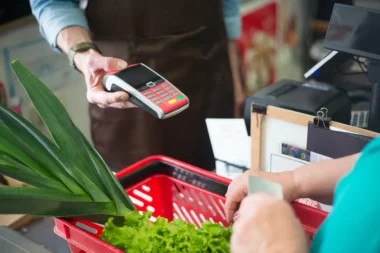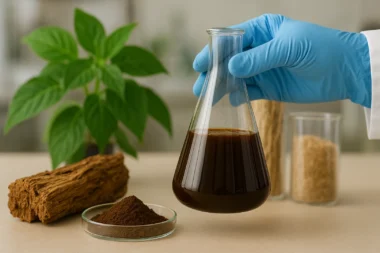Introduction
The need for sustainable packaging solutions With increasing global concern about plastic waste and its environmental impact, the search for sustainable packaging alternatives has gained significant momentum. Mushroom-based packaging materials present a promising solution due to their renewable nature and eco-friendly properties.
Mushroom-Based Packaging Materials:
Definition and Benefits Mushroom-based packaging materials, or mycelium-based materials, are derived from the vegetative part of mushrooms called mycelium. These materials offer numerous advantages, including biodegradability, renewable sourcing, and versatile applications.
Understanding Mushroom-Based Packaging Materials
Composition of mushroom-based materials Mushroom-based packaging materials consist of mycelium and agricultural waste, such as sawdust or agricultural residues. The mycelium acts as a natural binder, binding the waste particles together to form a cohesive structure.
Properties and characteristics Mushroom-based packaging materials possess unique properties that make them suitable for various applications.
- Biodegradability and compostability: These materials can naturally decompose, contributing to waste reduction and environmental preservation.
- Lightweight and high strength: Mushroom-based materials exhibit strength-to-weight ratios comparable to traditional packaging materials.
- Thermal and Moisture Resistance: These materials can withstand various environmental conditions, including temperature and humidity variations.
- Customizability: Mushroom-based materials can be molded into various shapes and sizes to meet specific packaging needs.
Applications of Mushroom-Based Packaging Materials Mushroom-based packaging materials find applications in diverse industries, including:
- Food and beverage packaging: Providing sustainable alternatives to single-use plastics and foam packaging
- Electronics Packaging: Offering protective cushioning for fragile components during transportation and storage
- E-commerce and shipping: ensuring the safe delivery of products while reducing the environmental impact of packaging waste
Step-by-Step Guide: Creating Mushroom-Based Packaging Materials
Substrate Preparation
The process of creating mushroom-based packaging materials starts with substrate preparation. The substrate serves as the growth medium for the mycelium, providing the necessary nutrients for its development. The following steps outline the substrate preparation process:
Selection of Substrate Materials: Various agricultural waste materials such as sawdust, straw, corn husks, or coffee grounds can be used as substrates. The choice of substrate depends on factors like availability, cost, and compatibility with the mushroom species selected for cultivation.
Substrate Conditioning: The selected substrate materials are often mixed with water and subjected to a conditioning process. Conditioning helps adjust the substrate’s moisture content and pH level, creating an optimal environment for mycelial growth.
Sterilization or Pasteurisation: Sterilization or Pasteurisation is typically performed to ensure the growth medium is free from contaminants. Sterilization involves subjecting the substrate to high temperatures using steam or heat, killing potential pathogens or competing organisms. Pasteurization involves heating the substrate to temperatures below sterilization to reduce microbial populations without eliminating them.
Inoculation and Incubation
After the substrate preparation, the next step is to introduce the mycelium to the substrate and provide optimal conditions for its growth. This process involves the following steps:
Inoculation Method Inoculation refers to the introduction of the mycelium into the substrate. This can be done by mixing the mycelium spawn (the mycelium in a growth medium) with the prepared substrate. The spawn acts as the inoculant that introduces the desired mushroom species to the substrate.
Incubation Environment Once the substrate is inoculated, it must be placed in a controlled environment conducive to mycelial growth. The ideal conditions for incubation include maintaining proper temperature, humidity, and lighting. These parameters vary depending on the specific mushroom species being cultivated.
During incubation, the mycelium spreads and colonizes the substrate, breaking the organic material and forming a network of interconnected hyphae.
Growth and Consolidation
The growth and consolidation stages involve allowing the mycelium to develop and form a solid structure. Here are the key steps involved:
Monitoring Growth Progress During this stage, it is crucial to monitor the growth progress of the mycelium. Observing the colonization and expansion of the mycelial network helps ensure the healthy development of the mushroom-based material.
Consolidation Period After the mycelium fully colonizes the substrate, a consolidation period is necessary. This period allows the mycelium to bind the substrate particles, forming a solid structure. The duration of the consolidation period can vary depending on the mushroom species and substrate composition.
Shaping and Forming
Once the mycelium has consolidated the substrate, it can be shaped and formed into the desired packaging structures. The following steps explain the shaping and forming process:
Molding Techniques Mushroom-based materials can be molded into various shapes and forms. Molded packaging structures can be created using molds, presses, or 3D printing technologies. The mycelium acts as a natural binder, holding the substrate particles in the desired shape.
Drying and curing
After shaping, the formed material undergoes drying and curing to remove excess moisture and strengthen its structure. This step is essential to ensure the stability and durability of the final packaging material.
Advantages and Environmental Impact of Mushroom-Based Packaging Materials
Sustainable waste recycling Mushroom-based packaging materials contribute to waste recycling efforts in several ways:
- Biodegradation and composting: These materials can naturally decompose, reducing the accumulation of packaging waste in landfills.
- Utilisation of Agricultural Waste: Mushroom-based materials provide an eco-friendly solution for repurposing agricultural byproducts and residues.
Reduced carbon footprint Mushroom-based packaging materials offer environmental benefits, including:
- Lower Energy Consumption: Production requires less energy than traditional packaging materials like plastic.
- Carbon Sequestration: The growth of mycelium consumes carbon dioxide, contributing to the reduction of greenhouse gas emissions.
Challenges and Future Directions
Scalability and commercialization Efforts are needed to overcome the challenges associated with large-scale production and market adoption of mushroom-based packaging materials.
- Optimization of Production Methods: Enhancing Production Efficiency and Scalability to Meet Industry Demands
- Cost Effectiveness: Exploring cost reduction strategies to make mushroom-based materials economically competitive
Material Performance and Durability Further research is required to improve mushroom-based packaging materials’ mechanical and functional properties, ensuring their performance matches or exceeds conventional materials.
Consumer Education and Acceptance Raising awareness among consumers about the benefits and proper handling of mushroom-based packaging materials can foster acceptance and drive market demand.
Case Studies:
Successful Implementation of Mushroom-Based Packaging Materials
Case Study A: Mushroom Packaging for Sustainable Food Delivery This case study highlights the successful implementation of mushroom-based packaging materials in a food delivery company, showcasing the positive environmental impact and consumer response.
Case Study B: Mushroom-Based Protective Packaging for Electronics This case study explores the use of mushroom-based materials for protecting delicate electronic components during shipping, emphasizing the material’s shock-absorbing capabilities and eco-friendly attributes.
Conclusion
Harnessing Mushroom-Based Packaging Materials for Waste Recycling Mushroom-based packaging materials provide:
- A sustainable solution to the waste recycling challenge.
- Offering biodegradability.
- Renewable sourcing.
- Versatile applications in various industries.
The Future of Mushroom-Based Packaging Continued research and innovation in material development, production techniques, and consumer acceptance are essential to fully realizing the potential of mushroom-based packaging materials in waste recycling and sustainable packaging practices.
By adopting mushroom-based packaging materials, we can move towards a more eco-friendly and circular economy, reducing the environmental impact of packaging waste while meeting the needs of a sustainable future.



